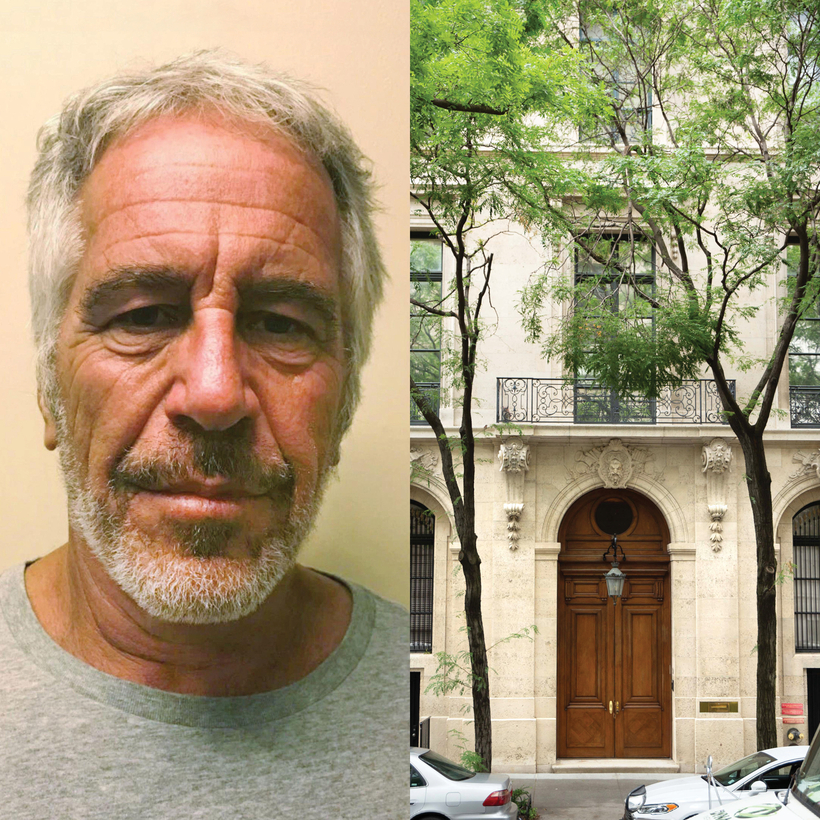The penthouse at 133 East 64th Street had the typical trappings of a luxury New York City apartment: a wraparound terrace, an elliptical staircase, a baby-grand Steinway piano. But unlike most listings, a federal agent lurked in the corner during showings.
In the summer of 2009, months after Bernie Madoff pleaded guilty to orchestrating the largest Ponzi scheme in history, the federal government seized the fraudster’s Upper East Side pre-war co-op, which he had shared with his wife, Ruth. That September, the apartment hit the market.
A potential buyer quickly emerged: Al Kahn, the toy tycoon behind Pokémon and Cabbage Patch Kids. As he toured Madoff’s kitchen, he said to himself, “There was the stove where he cooked the books. There was the refrigerator where he froze his assets.”
“I thought the place was undervalued,” Kahn tells me. “I checked out other apartments in the building and the area, and they were going for significantly more than this one was going for. I thought it was a good opportunity to make a profit.”

Kahn’s instincts turned out to be right. He bought the apartment in 2010 for $8 million, nearly 20 percent off its original listing price. After a renovation and divorce, Kahn’s ex-wife, Patsy, sold the place for $14.5 million in 2014.
“There was the stove where he cooked the books. There was the refrigerator where he froze his assets.”
Like Kahn, other buyers have snagged discounts by purchasing properties once owned by disgraced people. In 2020, after the Varsity Blues scandal, college-admissions scammer Lori Loughlin’s Bel Air mansion sold for $18.75 million, almost half of its original listing price, to Tinder co-founder Justin Mateen. In 2021, Jeffrey Epstein’s Upper East Side town house sold to Michael and Blake Daffey for $51 million, more than $35 million less than its original listing price.

Some buyers can ignore a property’s negative attention to get a unique bargain. “They’re savvy people,” says John Gomes, a top real-estate agent at Douglas Elliman. “They know how long to wait. They know how low to bid, and they know when to pounce.”
Take Harvey Weinstein’s Amagansett property. The Hollywood producer slashed the price of his two-acre Hamptons estate, which sat on Gardiners Bay and had its own home theater, in July 2017, just months before dozens of women accused him of sexual assault and harassment.
“When the scandal broke, we did have a buyer,” Beate V. Moore, the Sotheby’s broker who listed Weinstein’s Amagansett estate, tells me.

After the scandal, Weinstein pushed back on the buyer’s price, asking his broker, “Can you get me a little more?”
Moore had to level with the disgraced film producer. With seemingly less leverage to negotiate with the buyer, she and her co-agent on the house told him, “This is it.” Weinstein accepted an offer on the house for $1.4 million less than he bought it.
“They know how long to wait. They know how low to bid, and they know when to pounce.”
Not all homes of disgraced owners carry the same stink. Michael Perry, a Florida-based interior designer, redecorated Madoff’s Palm Beach house after its new owners bought it in 2010 for $5.65 million, nearly a third off its original listing price. Perry feels that there is a difference between homes where misconduct took place and homes that were simply lived in by disgraced owners. “It wasn’t like [Madoff] brought people in there and did terrible things inside the house. It has a different stigma,” Perry says.
A few years after Perry redecorated the house, including changing the color scheme from a “puky green color to a yellow,” his clients sold the home for a $3.4 million profit.
For houses that served as the scene of past owners’ crimes, it can sometimes take a demolition to draw interest in a property. In March 2021, the developer Todd Michael Glaser swooped in to purchase Epstein’s 14,000-square-foot Palm Beach mansion, where the registered sex offender had trafficked under-age girls, for $18.5 million—about $3.5 million off the listing price. Glaser then demolished the John Volk–designed house and, seven months later, sold the lot to the venture capitalist David Skok for nearly $26 million.

Other buyers go for smudging, an ancient ritual that uses herbs and smoke to supposedly rid spaces of negative energy, to cleanse a residence of its past. Gomes says the practice has become so popular among clients that he’s saved the contact of a professional smudger on his phone.
Sometimes the outcomes of these rituals accentuate the property’s cursed provenance rather than purge it. When Kahn’s ex-wife moved into Madoff’s Manhattan apartment, she held a smudging to clear the apartment of any bad spirits. “The apartment caught on fire. It was crazy. She started to burn the place down,” Kahn explains. The fire department showed up, extinguished the fire, and Patsy eventually lived in the apartment.
Others, like Moore, are skeptical that homes bear their previous owner’s reputation. “It’s walls and appliances attached, right?”
Andrew Zucker works at a television-production company in New York City

